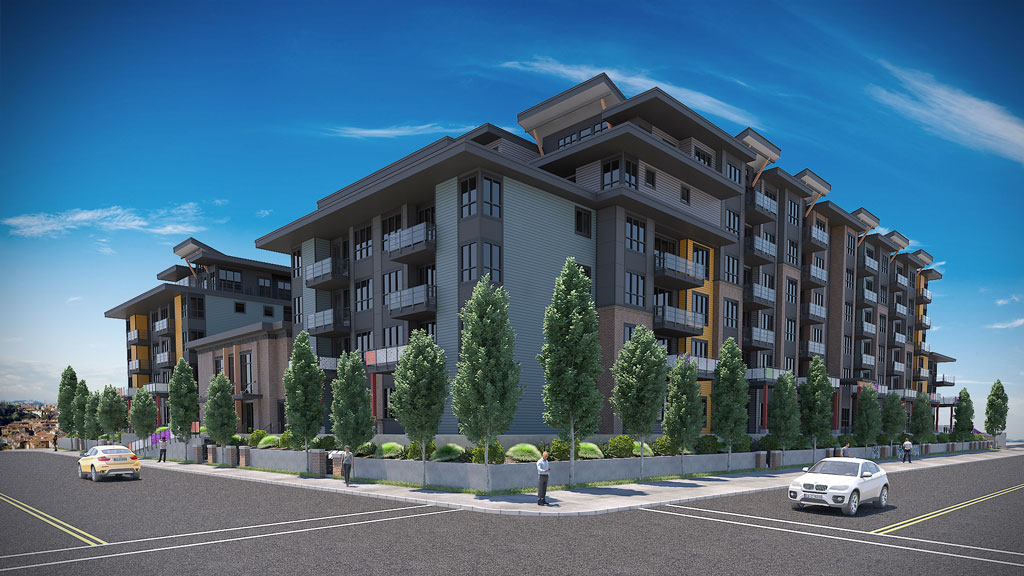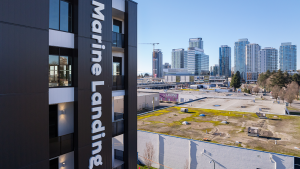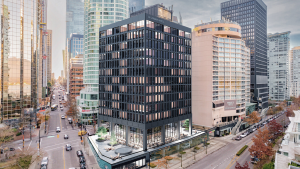At the Canadian Institute of Steel Construction’s 2022 conference, three presenters argued cold-formed steel is the ideal frame for mid-rise commercial and multi-family buildings.
This year’s conference took place Sept. 28 to 30 at the Sheraton Vancouver Wall Centre.
The presentation, Purpose-Built Rental Apartments in Chilliwack BC: Opportunities and Challenges Working with Cold Form Steel (CFS), covered the opportunities and challenges of CFS frame buildings and the implications for sustainability, cost, design and construction.
The presenters are Inder Mann, president and CEO of the Mann Group; Sukh Mann, business development manager of the LifeTec Construction Group Inc.; and Himanshu Chopra, associate architect at Kasian Architecture, Interior Design and Planning.
The Chilliwack project, which is called Centreville on Mary, is located on the site of a former Safeway grocery store in the downtown of the Fraser Valley city.
Phase 1 of the development, which was started in April 2022, is entirely residential, consisting of 193 units of one-, two- and three-bedroom suites.
Phase 2, which is expected to begin construction in 2024 once permits have been approved, will be a mix of commercial, office and residential space.
“It’s the first major construction project in Chilliwack that will see cold-formed steel rather than wood-frame materials used to build two new apartment buildings,” said Inder Mann. “Cold-formed steel provides significant advantages to the integrity of the structure, gives it long life and reduces the risk of fire.”
Mann says CFS is ideal for mid-rise buildings.
“Concrete is usually too expensive for mid-rise rental projects,” said Mann.
“Wood frame is commonly used in low-rises and mid-rise structures, but we’re trying to change that.”
CFS fills the gap between wood-frame low-rises and concrete highrises, he says.
“It allows us to build rental housing in mid-rise structures,” said Mann. “It’s good for neighbourhoods where the community accepts mid-rises, but is not yet ready to support highrises.”
Mann says CFS has a multitude of benefits as a structural material, and lists a few:
- Because it is non-combustible, CFS is safer and therefore means lower insurance premiums;
- steel is sustainable, the most recycled material on the planet;
- a CFS structure is more durable than wood frame, with less slumping and settling over time;
- termites don’t eat steel;
- CFS tolerates more moisture than wood frames during construction. If a wood frame structure gets wet, it needs to dry out before the interior can be completed; and
- CFS is ideal for structures that have regular, repeating geometry.
Part of the trio’s presentation dealt with the challenges of using structural CFS.
“Because cold-formed steel that is used as a structural material is relatively new in B.C., where wood is still the material of choice, many developments and construction consultants, trades, and municipalities require some education to understand how to work with it,” said Mann.
In addition, he says, consumers need to be brought up to speed on the benefits of CFS.
“They require some education before they understand they’re buying a safer and more durable product,” said Mann.
Compared to wood, CFS requires more time and effort in the planning stage in order to get the architectural and engineering details right.
“The construction trades must spend time co-ordinating and confirming details before getting onsite with the steel,” said Mann. “Our framing team spends time in the LifeTec factory to make sure it thoroughly understands how to install CFS.
“But, once the details are in place, the construction process proceeds smoothly, and faster than conventional wood frame construction.”
Sukh Mann says LifeTec, which manufactures the steel used in the Mann Group’s projects, has a 20,000-square-foot building and two-acre yard in North Surrey, B.C.
“And we’ll be expanding soon because we need more space,” he said.
Mann says LifeTec roll-forms the finished steel to any size, thickness or length after it has been slit.
“Developers are looking for an alternative to wood, and we want to replace as much wood with CFS as we can,” said Mann. “Anything that is made of wood can also be made of CFS – studs, prefab walls, joists and trusses, for example.”
Furthermore, cold-formed steel is friendly to the environment.
“I want to change the way people build, so that the world is in a better place when I leave it,” said Mann.











Recent Comments
comments for this post are closed